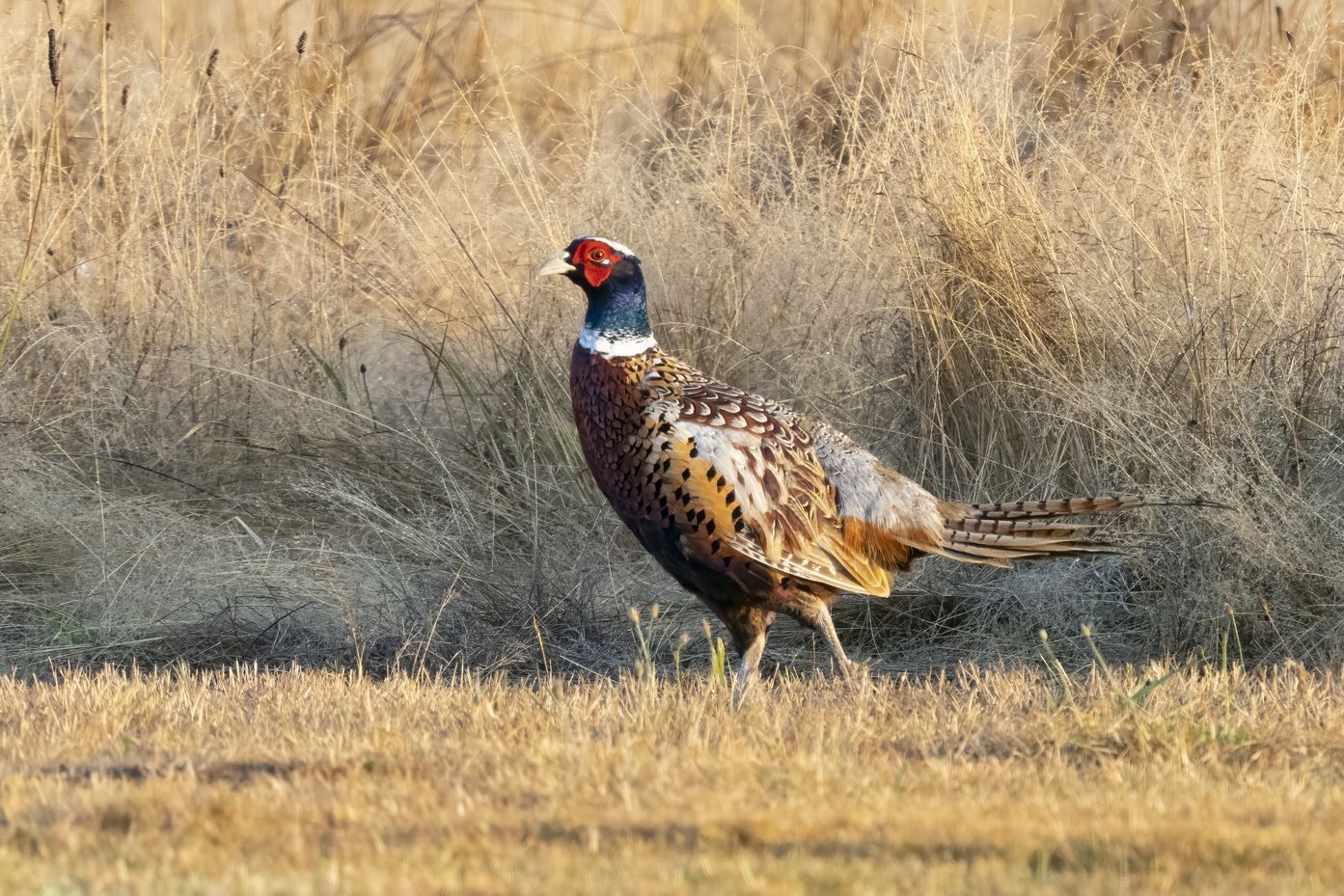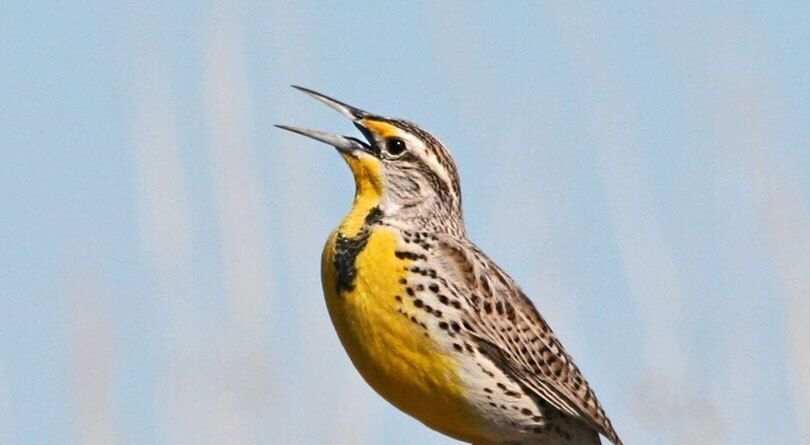
Photo of Ring-necked pheasant by Mick Thompson.
Nebraska’s unicameral considered a range of legislation during its spring session that could directly or indirectly impact issues of concern to Audubon Society of Omaha members.
Legislators eventually amended what Audubon Great Plains Executive Director Kristal Stoner labeled “a misguided attempt” to protect ring-necked pheasants. The bill, introduced by Senator Tom Brewer of Gordon, would have established bounties for nest predators — including badgers, coyotes, opossums, raccoons, red foxes, and striped skunks. Rachel Holt, of Nebraska News Service, reported that the legislation stated that pheasants are important to the state’s ecology and economy, and that hunting is an integral part of its culture.
“We’re not giving our youth the opportunity to become hunters and instill that spirit in them,” Brewer said. Supporters of the bill contended that the $10 bounty (for each predator, up to a maximum of 50,000 predators each year) would protect and promote healthy pheasant populations.
Wildlife biologists, as well as representatives from Pheasants Forever, Nebraska Game and Parks, and Nebraska Wildlife Rehab, testified against the bill.
“We generally have looked at bounties as highly problematic,” said John Carroll, director of the School of Natural Resources at the University of Nebraska-Lincoln, and gamebird biologist. Carroll noted that the primary reason behind the decline of pheasant populations is the conversion of native prairie to agricultural uses, which destroy habitats.
According to Carroll, in the Nebraska News Service story, pheasants require diverse habitats to survive, including trees, tall dense grass and open prairies. Planting row crops, such as corn and soybeans, destroys native habitats and threatens roosting, nesting and mating behaviors.
Andrew Little, a habitat management specialist at the University of Nebraska-Lincoln, testified that “habitat management is really one of the most significant pieces that we need to focus on, particularly restoration for a variety of birds and other wildlife species.”
The committee considering the bill eventually removed bounties for predators of ring-necked pheasants from this legislation.
Did you know?
The ring-necked pheasant is native to Asia and parts of Europe, its original range extending from the Balkans, the Black and Caspian Seas to Manchuria, Siberia, Korea, Mainland China, and Taiwan. It was introduced and established in North America during the 1800s as a game bird soley for hunting purposes.
In other action …
• Bills that were voted out of committee and scheduled for priority in the next legislative session include LB 218, which would invest $6 million annually to plant native grasses to reduce erosion and flood risks, and LB 566, which directs the Natural Resources Committee to study the viability and reliability of renewable energy.
• Natural resources projects that the body funded include: the next stage in the potential construction of the controversial Perkins County Canal; precision agriculture; the Water Sustainability Fund; and NPPD grants for engineering and modeling work supporting the application for Department of Energy funding related to a regional clean hydrogen hub and similar projects.
• Bills that were stalled — which Audubon Great Plains supported — included legislation that would: adopt the Riparian and Water Quality Practices Act; prohibit Homeowners Associations (HOAs) from limiting solar and wind capture on private lands; appropriate $2 million to support the Low-Income Weatherization Assistance Program; limit liability and nuisance related to land-management burning; and appropriate funds to the State Fire Marshall.
These legislative updates were drawn from Audubon Great Plains and Nebraska News Service publications.

